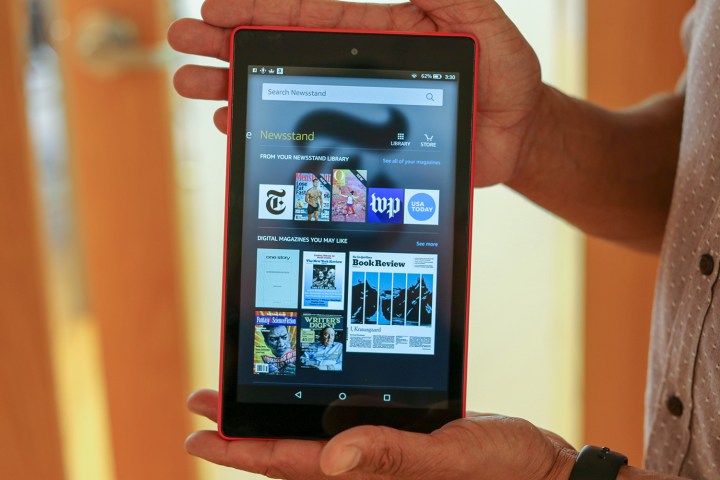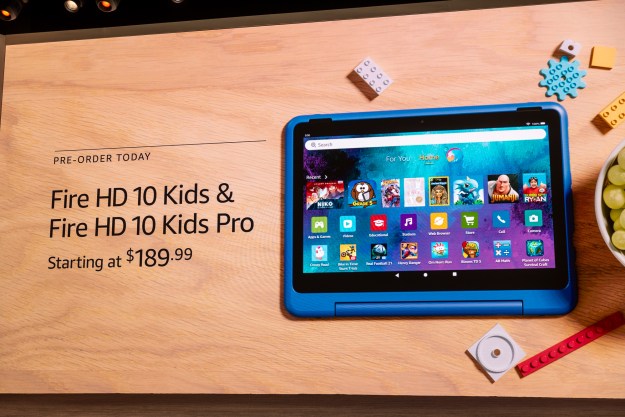While Microsoft’s Surface and Apple’s iPad are among some of the best tablets out there, you still can’t go wrong with Amazon’s Kindle and Kindle Fire HD tablets and e-readers. With the Kindle, you can download and read everything from books to magazines and even newspapers. Simultaneously, the Fire is perfect for those already deep in the Amazon ecosystem looking for a tablet that takes advantage of that. The Fire HD and HDX have all the reading capabilities of the Kindle but also provide access to internet browsing, video streaming, and more apps than you can count.
Like other tablets, the Kindle, Fire HD, and Fire HDX all receive occasional updates that add new features and improve security. These updates usually happen automatically, but in some cases, they don’t, meaning you’ll need to start the update yourself or manually apply the update to your device. Neither process is particularly hard or lengthy, but it helps to know what, exactly, you need to do when it’s on you to keep your devices up to date. That’s where we come in. Below, we’ll detail how to update your various Kindle and Fire HD devices, including what software version you should be on and what to do if the update doesn’t install properly.

How to update your Fire HD and Fire HDX
Check your software version
Before any update, check your current software version to ensure the update hasn’t already been installed. You can check this by doing the following:
Swipe down from the top of the screen and tap Settings > Device Options > System Updates. At the top of the screen, it should read, “Your device is running Fire OS X.X.X.X.” At the time of this writing, the current version of Fire OS is 7.3.1.7.
Update automatically
Normally, when your Fire HD/HDX is connected to Wi-Fi, the device will update automatically without any user input when a new update is available.
Starting the update manually
- If the update isn’t downloaded and applied automatically, you can trigger it yourself by going to Settings > Device Options > System Updates > Check Now/Update. The latter option will appear if the update has been downloaded already.
- Your device will restart to apply the update. After the restart, you’ll get a message saying, “Installing system update.”
Update using your Mac or PC
- If you’re using a Mac with OS X 10.5 or later, you’ll need to download and install Android File Transfer first.
- Go to the Fire and Kindle Software Update page. Scroll down until you find your specific device; click it. Download the software update found on the device page.
- Turn on and unlock your device, then connect it to your PC or Mac using a USB cable.
- On your computer, open the device drive called “Fire.” Or, if you’re using a Mac and installed Android File Transfer, the program should open automatically when you connect your device. Drag the software update file you downloaded earlier and move it to the drive’s internal storage folder. Do not put the software update in any other folder located on the Fire drive.
- When the file transfer is complete, disconnect your device. On the device, swipe down from the top of the screen, then tap Settings > Device Options > System Updates > Update to begin the installation process. Your tablet will restart automatically, and afterward, you’ll receive a message saying, “Installing system update.”
How to update your Kindle (Kindle Oasis, Voyage, Paperwhite, etc.)
Check the software version
Like the Fire HD and HDX, you should check the software version of your Kindle before attempting to update it, as it may have applied the update without your knowledge. To check, start from the Home menu and tap Menu > Settings > Menu > Device Info. At the time of this writing, the current software and firmware version is Kindle 5.13.4 or 5.12.2.
Update automatically
Usually, when your Kindle is joined to Wi-Fi, the device will update immediately without any user input when a new update is made available.
Starting the update manually
From the Home menu, navigate to the Menu > Settings > Menu > Update Your Kindle > OK. If you decide to start the update process, you’ll notice the message, “Your Kindle Is Updating.” After the update is complete, the device will reboot automatically.
Update using your PC or Mac
- Start by going to the Fire and Kindle Software Updates page. Locate your Kindle device, click it, and download the update found on the page.
- Connect your Kindle to your computer using a USB cable, then drag and drop the aforementioned update file to your Kindle drive. Specifically, place the file in the root directory and not in another folder found on the drive.
- When the transfer is finished, disconnect the device from your PC. On your Kindle, starting from the Home screen, tap Menu > Settings > Menu Icon > Update Your Kindle > OK. You’ll see the “Your Kindle Is Updating” message, and your device should restart and apply the update.
Troubleshooting the Kindle update
Problem: Update Your Kindle option is grayed out, or there’s an error message
If at any point you try to trigger the update on your own manually or after transporting the update file, the update selection is grayed out and isn’t responding, or you get an error message after hitting Update.
Possible solutions:
- It’s possible you already have the latest update installed. Check your device software and firmware version to see which version of the operating system you’re currently running.
- This could also result from the update file being placed in the wrong location on the device’s drive or the file not transferring correctly. Connect your Kindle or Fire HD to your computer and make sure the file is in the root directory instead of in another folder on your device. If it’s in the wrong spot, move it.
Problem: Update begins but fails to complete
After approving the update, the process starts as anticipated but crashes before the install is done. For some people, the update won’t even get going at all.
Possible solution:
This specific issue is most likely triggered by the update file being renamed inaccurately or copied update files existing. We recommend checking your computer and Kindle device and deleting all the update files. Then, go ahead and start the installation process over as outlined above. Be cautious in how you choose to rename the update file. According to Amazon Device Support, the file name can have “no trailing spaces or characters, such as (1), after the file name.”
Annoyance: Previous software version number remains after updating
After downloading the update, be aware that the software version number has not changed from its previous state before the update.
Possible solutions:
- If the install happened automatically over Wi-Fi, the update will finish when your device enters sleep mode. When you turn it back on, the version number will have updated to reflect the change. Try turning it off and on again.
- If you applied the update using the PC or Mac method mentioned above, redo the update, as it may have installed incorrectly.
Editors' Recommendations
- What is NFC? How it works and what you can do with it
- Best Amazon Fire tablet deals: Save on Fire HD 8, Fire Max 11 and more
- How to reset default apps on an Android phone or tablet
- How to get better service — 9 tips for boosting cell phone signal
- The best Android tablets in 2024: the 11 best ones you can buy



